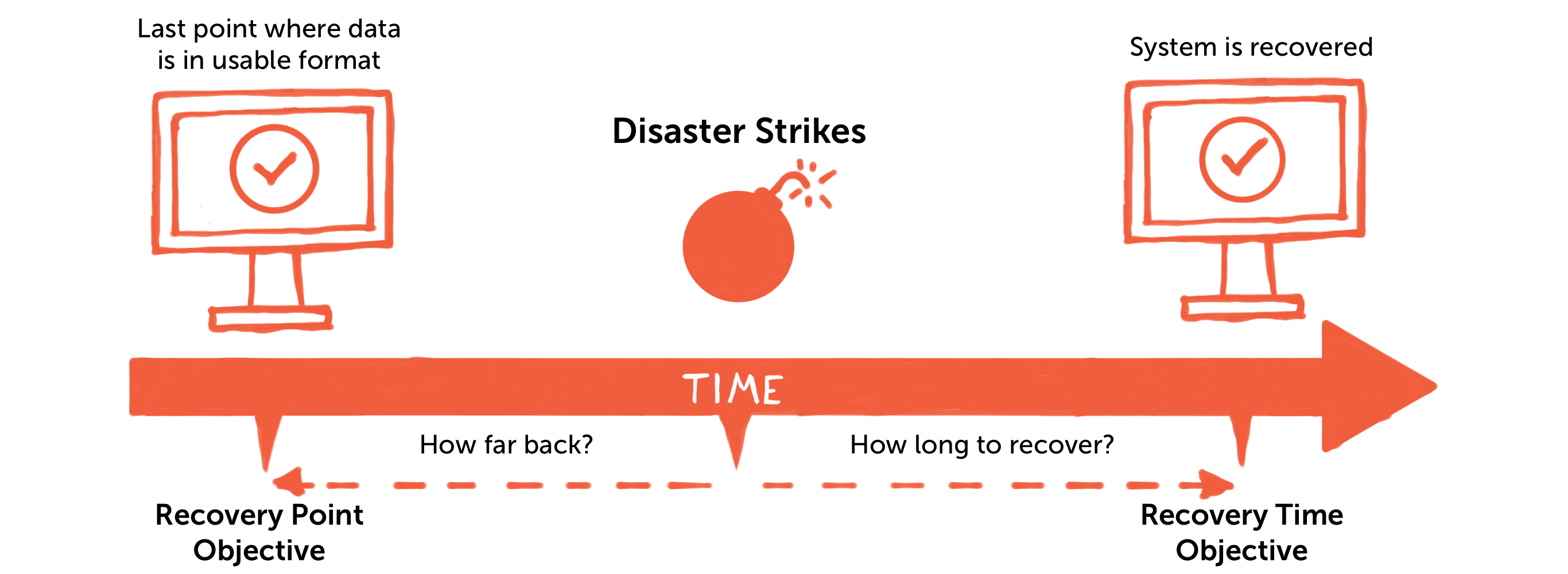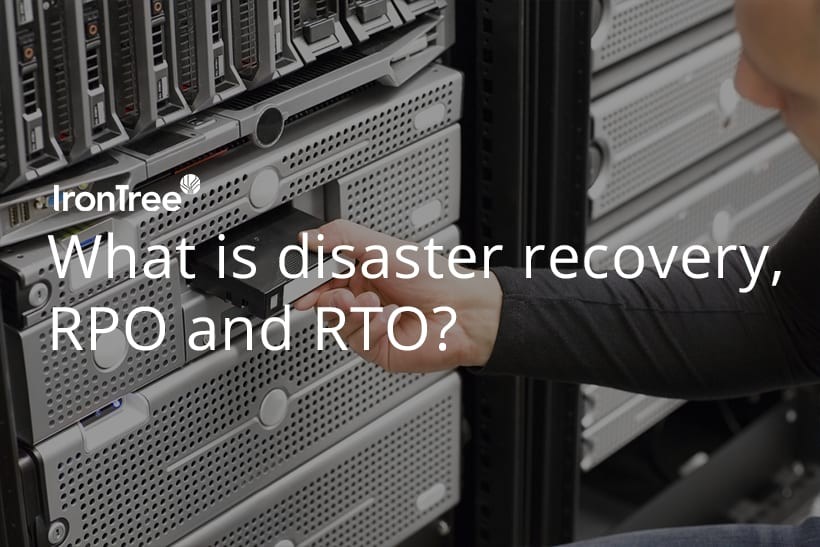What is disaster recovery?
Disaster recovery is the set of steps required to recover technology infrastructure after a natural or man-made disaster. Recovery point objective (RPO) and recovery time objective (RTO) are important factors of disaster recovery plans.
Disaster recovery focuses on IT infrastructure and the systems that support critical business functions, while business continuity is about keeping all aspects of a business functioning. So disaster recovery is a subsection of business continuity.
What do you need to do to ensure optimal disaster recovery?
I’d say the average organisation needs a disaster recovery plan for each of the following types of business infrastructure:
- IT servers and services, including physical servers, virtual private servers and cloud hosted infrastructure as well as switches, routers and all connectivity services.
- Desktops, laptops, macbooks, ipads and cellular phones used in an organisation
- Telephony systems
- IT security
- Other technology infrastructure, including printers and photocopiers
There are three kinds of plans in a disaster recovery scenario, namely:
- A simulation plan, where disaster recovery is, ideally, simulated on a quarterly basis so that when an actual disaster does occur the plan is relatively fresh in your mind.
- A live disaster recovery event, which involves extending your simulation plan to a switchover to new services that are possibly hosted elsewhere.
- A recovery back to the original recovered infrastructure.
I recommend using the above three plans for your IT servers and services, telephony and IT security plus a single plan for end-user and supplementary device replacement (because you aren’t going to hire or buy replacement equipment just for a simulation).
Your need to test your disaster recovery plan to ensure it’s valid and robust. Here are four ways to test a disaster recovery plan:
- Walk through testing: a desk-bound exercise where a plan is walked through and logically reviewed for correctness and completion.
- Simulation testing: an actual simulation of a disaster, without interrupting the organisation in any way.
- Full interruption testing: a full disaster recovery exercise, with high cost and disruption.
- Parallel testing: a full disaster recovery exercise without the disruption.
Your IT servers and services disaster recovery plan is obviously the most vital, and what you should focus on, as this area is the repository for most of your business’s processes and mission critical data. Within the plan, it’s essential to define the minimum possible RPO and RTO.
What is RPO and RTO?
RPO stands for recovery point objective. RTO stands for recovery time objective.
The image below outlines what these terms actually mean.

RPO is how far back your data will be restored to. So if your most recent data backup is last night at 8pm, then that’s your RPO.
RTO is how long it will take you to have a working service in place from the time of disaster until the service is ready for your organisation to use.
Investing in services to manage your disaster recovery will obviously lower your RPO and RTO, so it’s worth considering disaster recovery as a service.
What do you do next in terms of your disaster recovery plan?
Ideally, talk to us about putting necessary services, plans and simulation schedules in place to enable you to recover fast when disaster strikes.
We offer:
- Backup services for databases and file systems.
- Backups of server images for fast server recovery in our disaster recovery hosting environment.
- Planning software to define and manage disaster recovery plans.
- A dedicated team to manage your simulations and live disaster recovery events for you.

